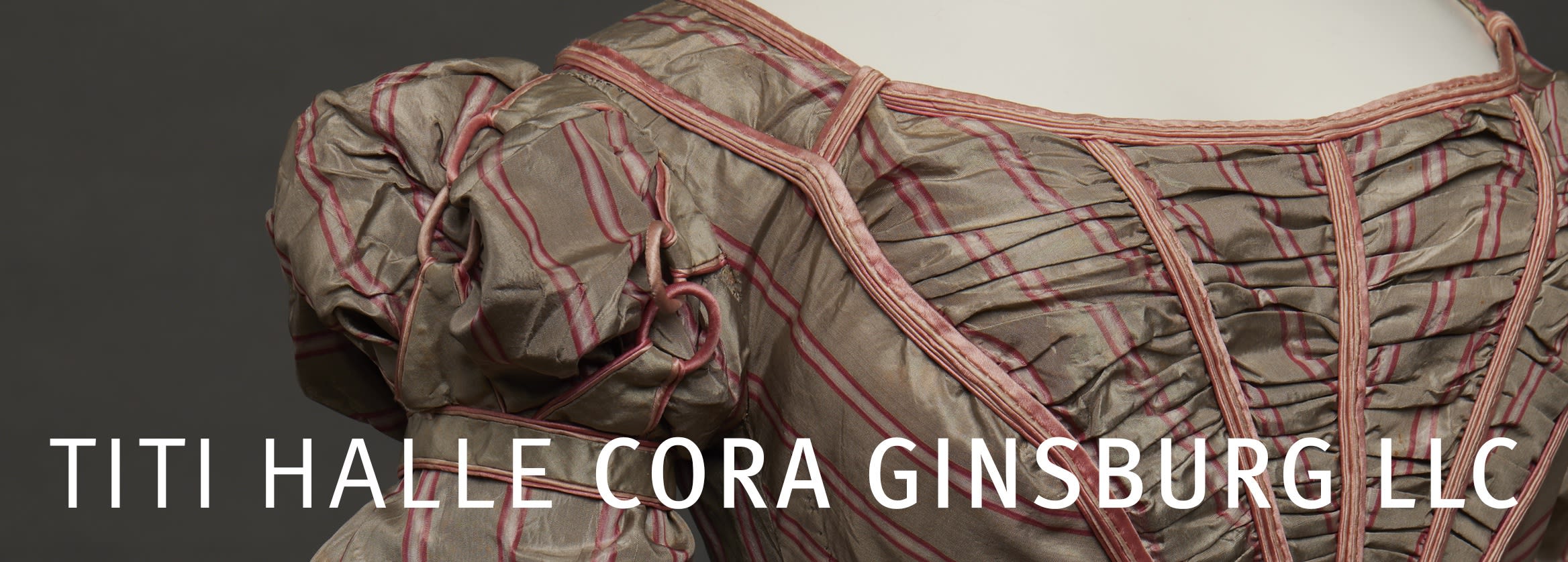
| Renaissance, but make it Regency. That's what the young woman who wore this ca. 1822 dress—our July Object of the Month—featured in our new catalogue) might have said to her dressmaker (in slightly different prose). This confection in dusty rose and dove gray striped taffeta with two-tone satin trim features "epaulettes" with slashed sleeves à l'espagnol. |
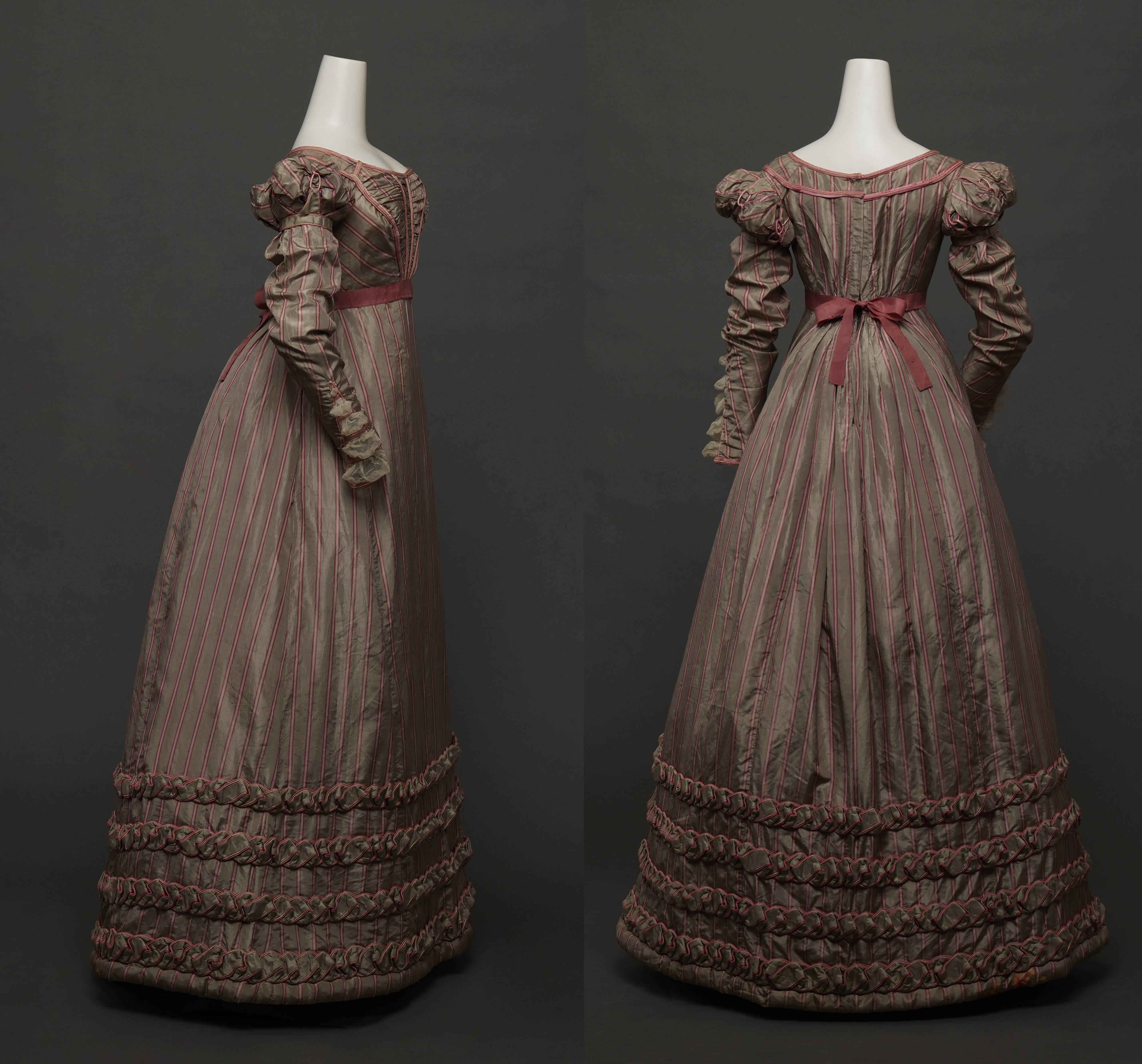
|
Worn for late afternoon or dinner, this gown is a perfect example of historicizing trends in women's dress during the Romantic period. The dressmaker took references from all over medieval and Renaissance Europe: the fitted, extra-long sleeves covering the backs of the hands; the dramatically high "epaulettes," here with interlocking rings; and, of course, the puffs of fabric peeking through "slashes" to reveal the garment below (in this case, insertions of silk tulle in the sleeves). The dress and the fashion plates shown below are English, but this revivalist vogue also took hold in France and, by extension, other parts of Europe. |
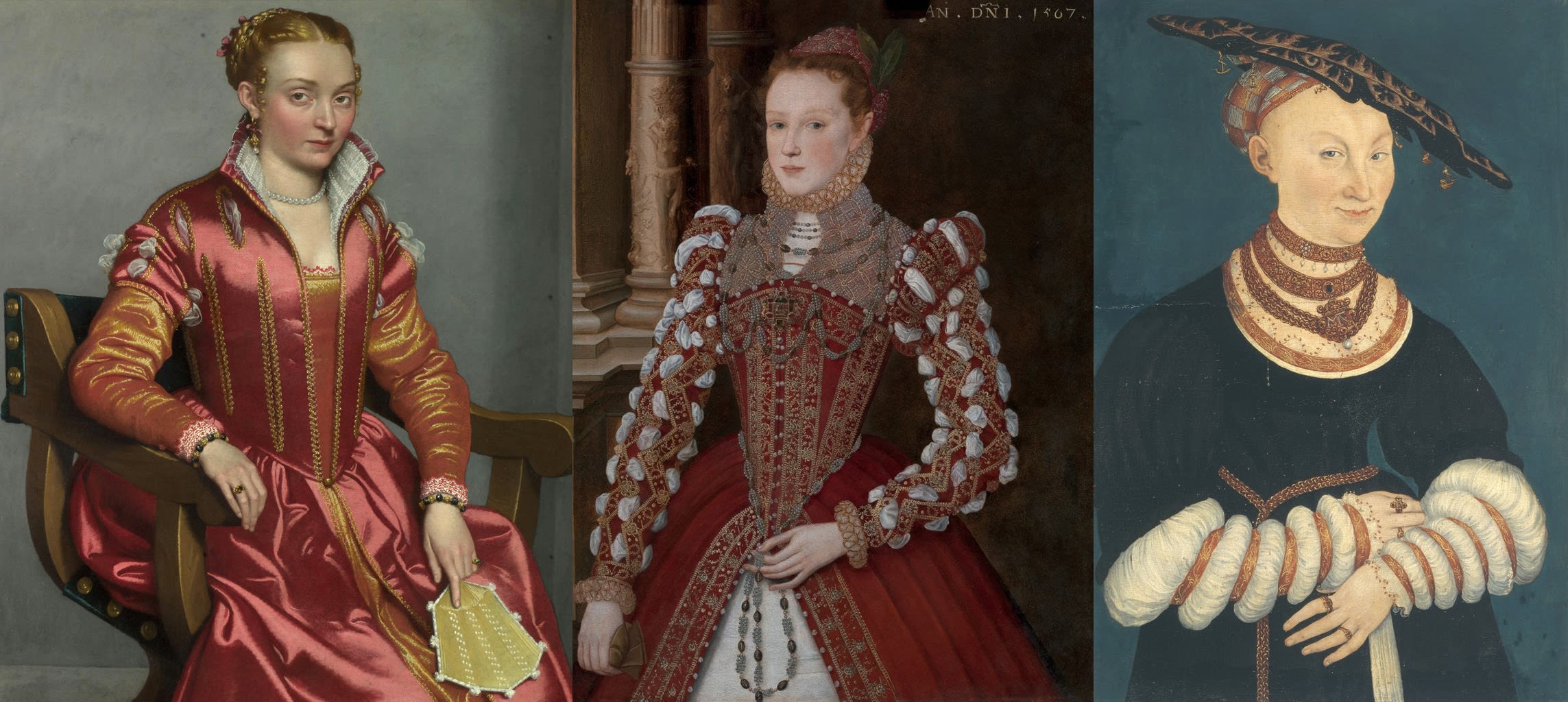
|
Left: Giovanni Battista Moroni, Portrait of a Lady (detail), ca. 1556–60, National Gallery.
Center: Anglo-Flemish artist, Portrait of a Young Woman, 1567, Yale Center for British Art.
Right: Lucas Cranach the Elder or Younger, Katharina of Mecklenburg, ca. 1530–35 or 1547, Veste Coburg.
|
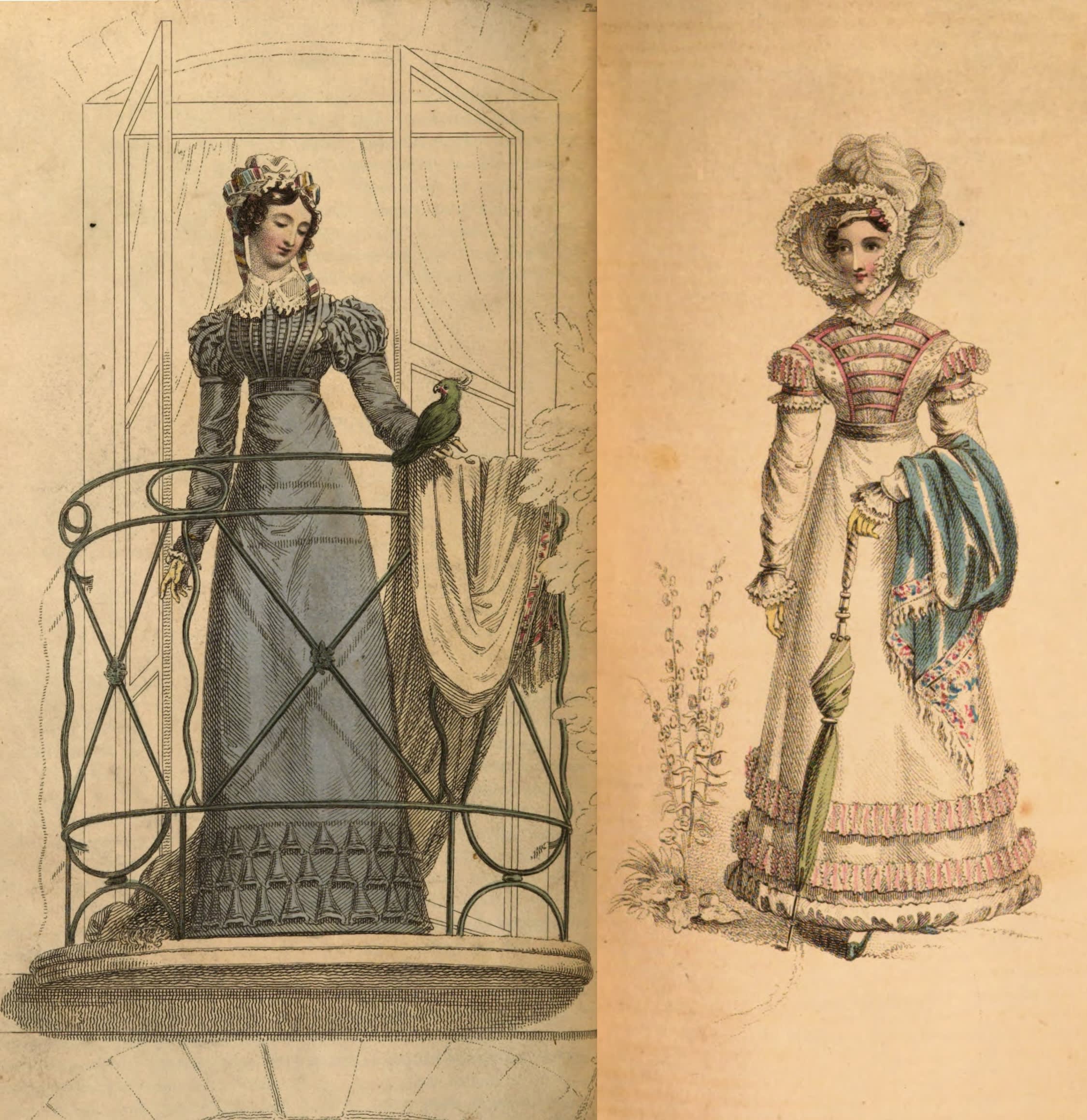
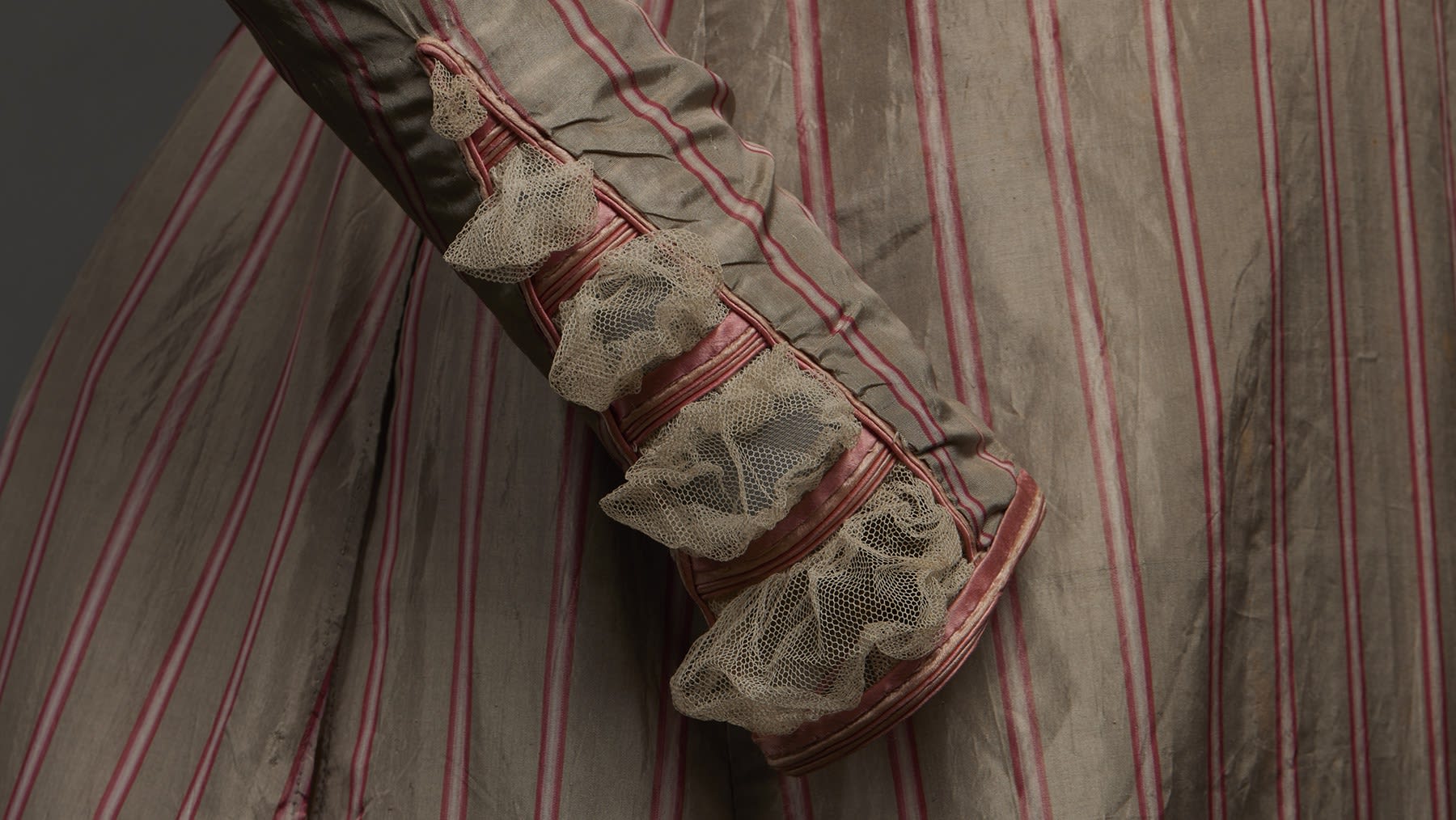
|
Read more about this dress and others in our latest catalogue here. For inquiries and more information, email us at info@coraginsburg.com, and be sure to follow us on Instagram. |

